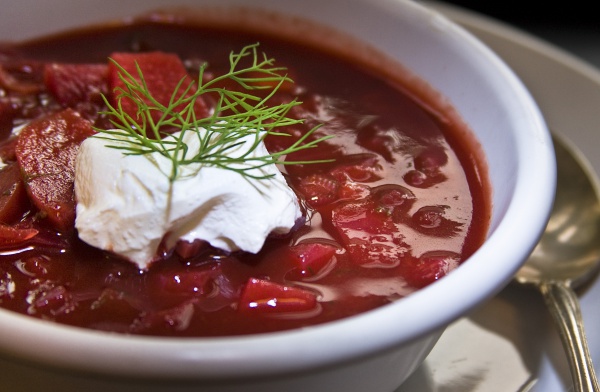Facts About Borscht
Borscht is a tangy, flavorful soup originating from Eastern Europe and Northern Asia, with the Ukrainian version being the most famous. The star ingredient is beetroots, which impart the soup's signature deep red hue. Borscht has a rich history, beginning with pickled hogweed and evolving into numerous variations over time, such as the popular beet-based red borscht, green borscht, white borscht, and cabbage borscht.
The word "borscht" derives from East Slavic languages, originally referring to hogweed. Traditional Ukrainian borscht typically features a blend of meat or bone broth, sautéed vegetables, and beet sour. The ingredients can vary widely, but common additions include beetroots, cabbage, carrots, potatoes, and tomatoes. The soup's distinctive sweet-and-sour flavor is often achieved with beet sour, though vinegar, lemon juice, and tomatoes can also provide a tangy kick.
Borscht boasts numerous regional variations across Eastern Europe, each with its own unique twist. In Russia, you’ll find Moscow borscht, Siberian borscht, and Pskov borscht, among others. Polish cuisine offers clear red borscht and a special Christmas Eve borscht. Ashkenazi Jews have both meat and dairy versions to suit different dietary needs.
Beyond the classic beet-based borscht, there are also versions without beets. Green borscht, for instance, is a lighter soup made with leafy greens, while white borscht is a fermented blend of rye flour or oatmeal and water. Each region has its own take on borscht, incorporating ingredients like dairy products, blood, or a variety of vegetables.
Borscht is often garnished with sour cream, herbs, and hard-boiled eggs, and it’s commonly served alongside dumplings or croquettes. The soup is deeply embedded in religious and cultural traditions, making appearances at ritual meals across various denominations. It's considered a national dish by Ukrainians, Russians, Poles, Lithuanians, and Ashkenazi Jews, each group cherishing its cultural significance.
Over time, borscht's popularity has spread beyond Eastern Europe, reaching North America through waves of migration and becoming a cherished part of global cuisine. Despite its many adaptations and interpretations, borscht remains a beloved and iconic dish, celebrated for its rich history and diverse flavors.

 Latvia
Latvia